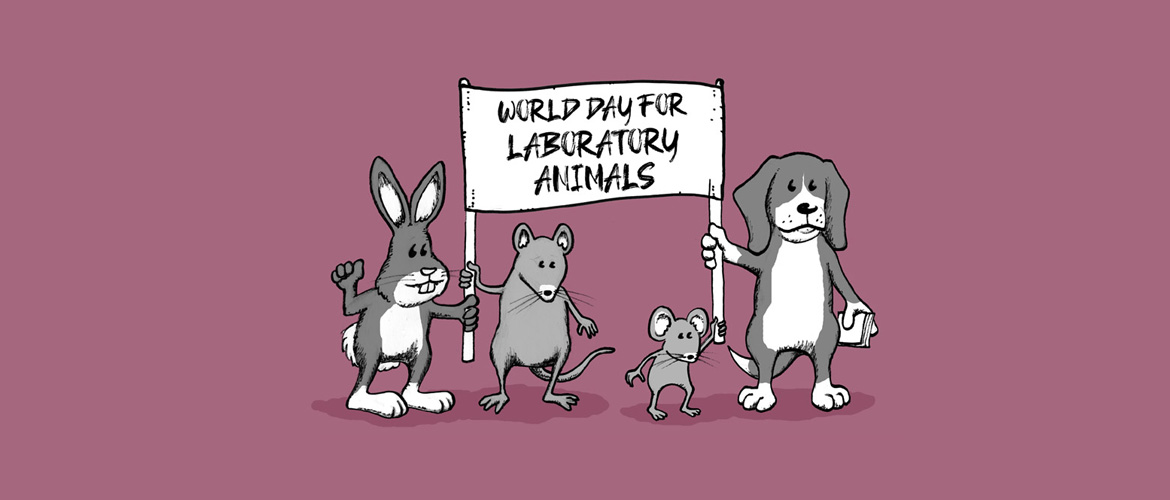Merseyside Animal Rights has obtained information indicating that the University of Liverpool conducted 25,346 experiments on animals in 2019, with a further 4,337 bred who were either killed, or died, without being experimented on. We obtained the information via a freedom of information request. The overall figure for the previous year was 23,612. We were due to hold the annual World Day for Animals in Laboratories march in Liverpool this year with Team Tino Animal Rights and Vivisection Exposed. We are shocked and disappointed that the figures have increased yet again, despite the university’s claim that it is committed to reducing the numbers of animals it uses in research.
Of the animals who were subjected to these procedures, 9,670 were used in ‘basic research’ – what could also be termed ‘scientific curiosity’, 8,273 were used in the breeding/maintenance of colonies of established genetically altered animals, not used in other procedures, 72 were used for education or training purposes. 7,331 were used in applied research, 653 of these were for animal disease and disorders and 2,407 for ‘animal welfare’; the remaining 4,271 of these were used for studying human diseases and 234 for disease diagnosis.
898 of these procedures inflicted severe pain on the animals used, 10458 inflicted moderate pain, 8802 inflicted mild pain, 5253 were described as ‘sub-threshold’ indicating they didn’t inflict any noticeable pain on the animal while 235 led to ‘non-recovery’ meaning they were performed under general anaesthetic and from which the animal did not recover consciousness.
Of the animals used the vast majority were mice with 21,694 being experimented on, followed by 2407 cows, 653 domestic fowl, 179 zebra fish, 311 rats, 62 rabbits and 40 sheep, each and every one a sentient creature with the ability to feel pain. The university bred 110 gerbils but it these don’t appear in the figures for procedures.
We are releasing the figures to coincide with World Day for Animals In Laboratories, which falls on the 24th of April each year, and is the annual day for remembering the plight of animals in laboratories.
The figures we have obtained show a steady increase since 2014 when they first started recording them:
2014 14753
2015 23157
2016 22266
2017 19969
2018 23612
2019 25346
The University of Liverpool claims to embrace the principles of reduction, refinement and replacement with regards to animal testing, and to be committed to the development of alternative methods, but the figures show that the university is clearly not, in practice, adopting any of these three principles, known as ´the 3Rs´. If the university was genuinely interested in reduction, its figures for animals used would be reducing, not increasing. In terms of refinement, which refers in part to how much pain is inflicted on animals, the numbers of experiments inflicting severe pain have also increased, from 690 the previous year, clearly contradicting any meaningful commitment to refinement. And as for replacement, again, if the university was serious about replacing animals in research we would see its figures for animal experiments going down not up.
The use of non-human animals as models for both toxicity testing and human disease research is increasingly being called into question. Differences between species means that the results delivered are often inaccurate and frequently dangerous. Nine out of every ten new drugs developed and passed as safe and effective in animals never lead to any human benefit due to ineffectiveness or unexpected toxicity when trialled in people. The use of non-human animals is actually delaying medical progress as well as posing a safety threat to those who volunteer for drugs trials.
Positively, in recent years, there has been a shift in focus towards the replacement aspect of the 3Rs with calls from within the scientific community to accelerate the replacement of animals in research and testing with more human relevant alternatives on both scientific and ethical grounds. Unfortunately, the University of Liverpool seems determined – despite its claims to the contrary – to remain bound to the outdated animal model for research. We are extremely disappointed that the figures for animal experiments have gone up, rather than down, in the last year.
Last year we launched a petition calling on the University of Liverpool to completely replace the use of animals in its research. The petition, which gained 4,704 signatures (from both online and paper contributions), was handed in in May 2020 with the following letter. We are currently awaiting a response.
